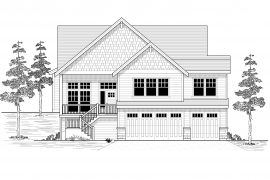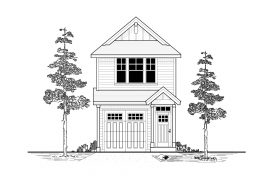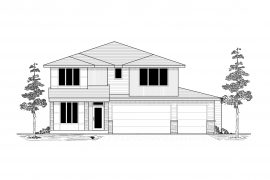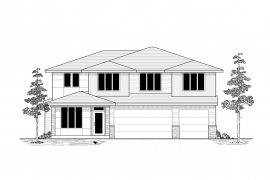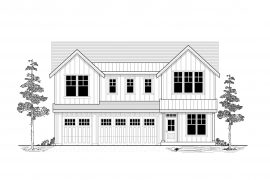What to look for in your floor plan…
Searching through home designs can take a lot of time, as there are so many things to consider in a design. While searching for home designs, we recommend that you focus on the floor plan rather than the style of the home. In most cases, changes can be made to the design to reflect the style that you prefer. Here are some things we suggest to help you create your dream home.
- Make a list of the things you want in your home and prioritize them.
- When reviewing a home design, make sure all the rooms you need are included.
- Think about functionality – does the floor plan have the right flow to suit your family?
- Think about how you intend to use the room and look to see if your furniture will fit. Where is that big entertainment center or bookcase going to fit? Look for good “furnishable” walls. For example, a large family room is nice, but there could be a fireplace on one wall, lots of windows on another, and a door entrance on the other wall.
- Look at natural floor changes. Most clients have specific flooring they want for different areas, which will connect together in some way. Make sure that the break between the two kinds of flooring makes sense. For example, you may have the family room connecting and open to the kitchen and nook area. Planning the floor separation is important so you do not end up with your sofa half on carpet and half on hardwood.
How to select a design that will build within your budget…
Before you begin searching for a plan, it is important to determine what you can afford, as your budget will directly affect what size of home you can build. You want to make sure that the design you select is not too large for your budget, nor too small for your needs. First, find out what the average cost per square foot to build in your area is by contacting a local Realtor or Builder. You can also read through your local real estate advertisements to get a good understanding of the market for new homes. Remember, the pricing in ads for new homes includes the cost of the land and Realtor commission fees. The national average price per square foot to build is $65-$150. This does not include the cost of the land, or any additional fees required by the city or county. The difference in price per square foot depends on the size of home, type of materials used, and how the home is designed.
Two designs with the same square footage will not necessarily cost the same to build. Construction costs will depend on the complexity of the design. A simple square box shaped design will be less expensive to build than a design that is more complicated. You must also consider the different types of rooms in the design. For example, the kitchen and bathrooms are the most expensive rooms to build because of all the cabinetry, appliances, sinks, etc. A large kitchen and several bathrooms in a home design can dramatically affect the price to build. The garage is considered the least expensive square footage to build, as no painting, carpeting, cabinetry, etc. is required.
Looking at the “big ticket items” will help determine the most cost-effective design. The two most expensive components are the roof and foundation. The more foundation and roofing required and the more complicated they are, the more expensive it will be to build. Next, look at the “expensive” rooms such as the kitchen and bathrooms as cabinetry, appliances, tub, etc. are costly items.
The final items to look at are how many windows and doors there are in the design. Covered porches and decks can also add considerable costs, however there are some cost saving solutions that can be used. Talk to your builder for more information on these options.
A good design tip: put your money into what you value. If a complicated roof is not valuable to you, then keep it simple. The savings may allow you some of the upgrades and details that you might not be able to afford with a more complicated design.
Building a two-story versus a one-story design can also save on your price per square foot. Remember the roof and foundation are your biggest expenses. A one-story design will typically have more area of foundation and roof than a two-story home of the same square footage. However a two-story design may not always offer the savings you would expect in homes with lower square footage, due to the cost of stairs and a ½ bath for guests to use on the main floor. You will find the best savings going to a two-story home in designs that are 1800 square feet and above.
Bonus rooms and Option rooms can serve many uses…
These rooms are very flexible and can meet many different homeowners’ needs. Bonus rooms, which are typically located above the garage, can be used as a second family room, game room, or a spacious bedroom suite. Some owners choose to leave this room unfinished to save on initial building costs, leaving room for growth for future needs.
Option rooms, which are generally smaller in size than bonus rooms, can be used as a second family room, extra bedroom or as a den. Option rooms located on the main floor can also be used as a formal dining room or as a formal parlor for those pieces of fine furniture or antiques you may have.
Check on restrictions for building on your property…
Most properties come with certain building restrictions that have been determined by the Developer. These restrictions are called CC&R’s which stands for covenants, codes, and restrictions. The most common is a minimum set back requirement from the front, sides, and rear of your lot. For example, a five-foot side yard set back means that you cannot build your house any closer than five feet from your side property line. These restrictions determine the “footprint”, which is the maximum width and depth the house can be, measured at the foundation. Few developers require that the eves be considered within the footprint for maximum size. Other restrictions may apply such as a height limitation or a minimum or maximum square footage for your home. We recommend that you research restrictions for building on your property before searching for home designs. You should be able to receive this information and any other restrictions from the Realtor, Builder, Developer, or the city/county building department. If you are unsure what you can build or do with a property, ask before buying!
Choosing the Builder that’s right for you…
It is important to select the right Builder when building your dream home because this person is going to be your closest friend during the building process. You will want someone that you can easily communicate with and that has a high level of business integrity and professionalism.
- Choose a Builder that is licensed and bonded, has experience building new homes in your area, and is committed to the community.
- Ask for some referrals and request to see some of the Builders most recent projects. This should give you an idea of what you can expect for the price and the quality the Builder has to offer.
- If possible, talk with some of the Builder’s past clients. In most cases, they can give you more information on the Builder and what you can expect during the construction process.

